After the Moon, it is the Sun for the Indian space agency. Days after landing India on the Moon safely, the Indian Space Research Organisation (ISRO) will be launching the country’s first space-based observatory called Aditya-L1 to study the Sun at 11.50 a.m. on September 2.
The Indian space agency has invited public to register in order to view the proposed launch from the gallery at the Sriharikota space port in Andhra Pradesh.
The Aditya-L1 – named after the Sun God in Hindu mythology - will be carried by the Indian rocket Polar Satellite Launch Vehicle-XL variant (PSLV-XL), the ISRO said.
Initially, Aditya-L1 will be ejected in a low earth orbit (LEO). Then the orbit will be elliptical. As the spacecraft travels towards L1, it will exit the earth’s gravitational Sphere of Influence (SOI).
After exit from SOI, the cruise phase will start and subsequently the spacecraft will be injected into a large halo orbit around L1. The total travel time from launch to L1 would take about four months for Aditya-L1 and the distance will be about 1.5 million km from the Earth.
The distance between the Earth and the Moon is about 3,84,000 km.
"A satellite placed in the halo orbit around the L1 point has the major advantage of continuously viewing the Sun without any occultation/eclipses. This will provide a greater advantage of observing the solar activities and its effect on space weather in real time,” the ISRO said.
According to the ISRO, the spacecraft carries seven payloads to observe the photosphere, chromosphere, and the outermost layers of the Sun (the corona) using electromagnetic and particle and magnetic field detectors.
"Using the special vantage point L1, four payloads directly view the Sun and the remaining three payloads carry out in-situ studies of particles and fields at the Lagrange point L1, thus providing important scientific studies of the propagatory effect of solar dynamics in the interplanetary medium," it said.
Aditya-L1’s seven payloads are expected to provide most crucial information to understand the problem of coronal heating, coronal mass ejection, pre-flare and flare activities and their characteristics, dynamics of space weather, propagation of particle and fields and others, the Indian space agency said.
The ISRO said the major science objectives of Aditya-L1 mission are: Study of solar upper atmospheric (chromosphere and corona) dynamics, study of chromospheric and coronal heating, physics of the partially ionised plasma, and initiation of the coronal mass ejections, and flares.
It will also observe the in-situ particle and plasma environment providing data for the study of particle dynamics from the Sun.
Other objectives are physics of solar corona and its heating mechanism, the diagnostics of the coronal and coronal loops plasma: Temperature, velocity and density, development, dynamics and origin of Coronal Mass Ejections (CME), to identify the sequence of processes that occur at multiple layers (chromosphere, base and extended corona) which eventually leads to solar eruptive events, magnetic field topology and magnetic field measurements in the solar corona, and the drivers for space weather (origin, composition and dynamics of solar wind).
The Indian space agency said that the Sun estimated to be 4.5 billion years old is a hot glowing ball of hydrogen and helium gases and is the source of energy for the solar system. "The gravity of the sun holds all the objects of the solar system together. At the central region of the sun, known as ‘core’, the temperature can reach as high as 15 million degree Celsius," it said.
At this temperature, a process called nuclear fusion takes place in the core which powers the sun. The visible surface of the sun known as photosphere is relatively cool and has a temperature of about 5,500 degree Celsius, the ISRO said.
The sun is the nearest star and therefore can be studied in much more detail as compared to other stars. By studying the sun, we can learn much more about stars in our Milky Way as well as about stars in various other galaxies, the ISRO said.
The sun is a very dynamic star that extends much beyond what we see. It shows several eruptive phenomena and releases immense amount of energy in the solar system. If such explosive solar phenomena is directed towards the earth, it could cause various types of disturbances in the near earth space environment.
Various spacecraft and communication systems are prone to such disturbances and therefore an early warning of such events is important for taking corrective measures beforehand.
In addition to these, if an astronaut is directly exposed to such explosive phenomena, he/she would be in danger. The various thermal and magnetic phenomena on the sun are of extreme nature. Thus, the sun also provides a good natural laboratory to understand those phenomena which cannot be directly studied in the lab.
The Indians space agency said all the seven payloads carried by Aditya-L1 are indigenously developed by different laboratories in the country in close coordination with it. The Visible Emission Line Coronagraph (VELC) instrument is developed at the Indian Institute, of Astrophysics, Bangalore; Solar Ultra-violet Imaging Telescope (SUIT) instrument at Inter University Centre for Astronomy & Astrophysics, Pune; Aditya Solar wind Particle Experiment (ASPEX) at Physical Research Laboratory, Ahmedabad; Plasma Analyser Package for Aditya (PAPA) at Space Physics Laboratory, Vikram Sarabhai Space Centre, Thiruvananthapuram; Solar Low Energy X-ray Spectrometer (SoLEXS) and High Energy L1 Orbiting X-ray Spectrometer (HEL1OS) payloads at U R Rao Satellite Centre, Bangalore and the Magnetometer at the Laboratory for Electro Optics Systems, Bengaluru.

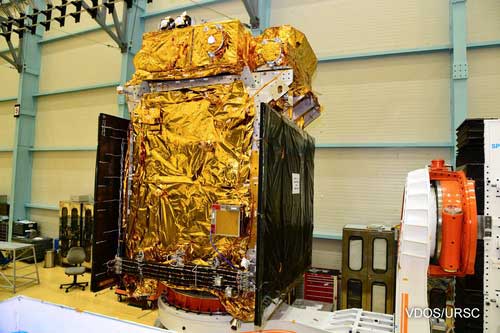
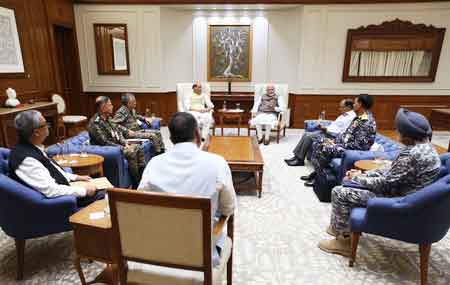
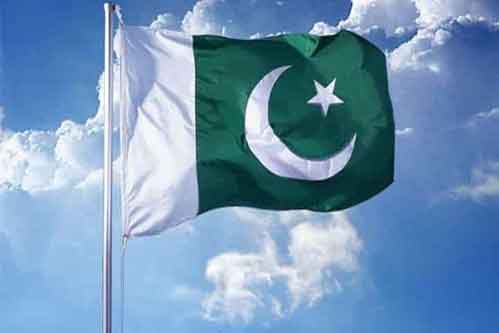
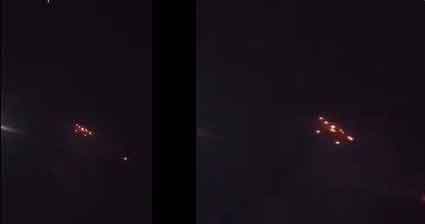
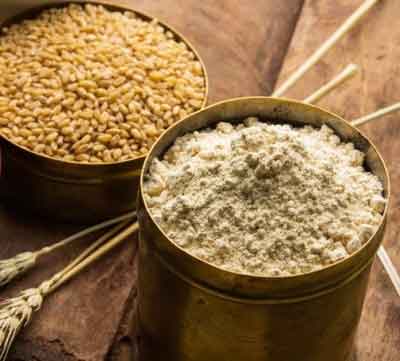
Security tightened at Agartala airport amid India-Pakistan tensions
Airport Director Kailash Chander Meena informed that enhanced security protocols have been implemented at the MBB Airport, which is categorised as a hyper-sensitive installation due to its proximity to the Bangladesh border.
Congress takes out 'Jai Hind Tiranga Yatra' in NE to support 'Operation Sindoor'
As part of their nationwide programme, opposition Congress on Friday organised a 'Jai Hind Tiranga Yatra' in northeastern states in support of the Indian Army’s determined action under ‘Operation Sindoor’, targeting terror hideouts in Pakistan.
Operation Sindoor: PM Modi meets Rajnath Singh, NSA Doval and three service chiefs
In the backdrop of the ongoing ‘Operation Sindoor’, Prime Minister Narendra Modi chaired a high-level meeting attended by Defence Minister Rajnath Singh, National Security Advisor Ajit Doval, Chief of Defence Staff General Anil Chauhan, and Chiefs of the Armed Forces and senior officials.
11 more Bangladeshi nationals held in Tripura
The Tripura Frontier of the Border Security Force (BSF), jointly with state police, on Friday apprehended 11 more Bangladeshi nationals, including four women and four children, officials said.
Railway Protection Force tightens security in NFR zone
In response to escalating security challenges across the country, Railway Protection Force (RPF) of the Northeast Frontier Railway (NFR) has significantly strengthened its security protocols at stations, trains and railway premises, an official said on Friday.
India opposes IMF lifeline for Pakistan due to terror financing risk
India strongly opposed further financial assistance from the IMF to Pakistan at the executive board meeting held on Friday, expressing serious concerns over Islamabad’s track record and the fact that the bailouts were enabling the cash-strapped country to sponsor cross-border terrorism.
Sirens echo across Jammu as 'blasts' trigger blackout; CM Omar Abdullah posts urgent advisory on social media
Jammu city plunged into darkness late Friday evening after a series of blasts were heard across the region, prompting authorities to sound emergency alarms and urge citizens to stay indoors.
Enough rice, wheat, sugar, oil and pulses stock, no need to panic: Pralhad Joshi
The government on Friday reiterated that there is no shortage of essential commodities in the country, and citizens are advised not to panic or rush to the markets to purchase food grains.